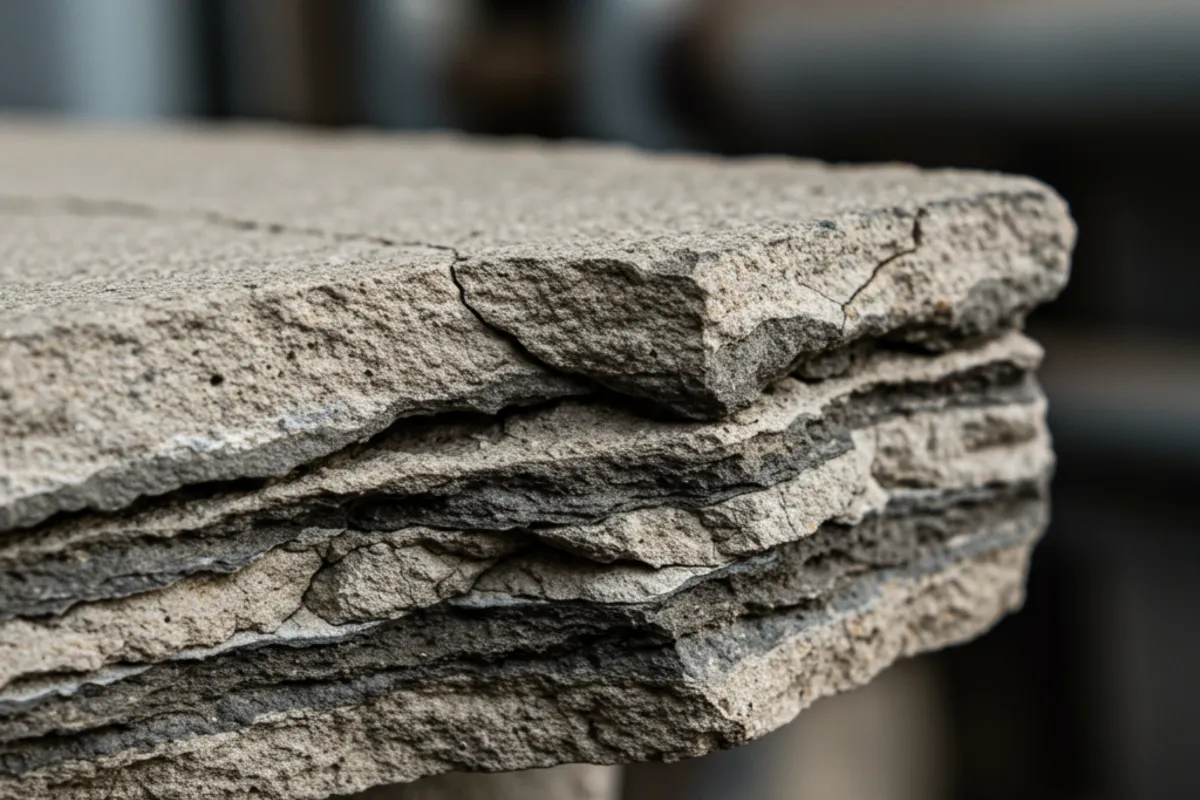
Concrete remains the backbone of modern infrastructure, forming the foundation of countless buildings, bridges, and industrial facilities. Yet, two often-overlooked issues—delamination and spalling—pose significant threats to the longevity and integrity of concrete structures. Delamination refers to the separation of concrete layers, often occurring parallel to the surface, while spalling is the breaking, chipping, or flaking of concrete, usually resulting in visible surface damage.
Both phenomena compromise the strength and safety of concrete elements. When left unaddressed, they can lead to accelerated deterioration, higher repair costs, and even partial or total structural failure. In commercial environments, this can mean operational disruptions, liability concerns, and increased long-term maintenance expenses. In residential settings, these issues may endanger occupants and diminish property value.
Recognizing the significance of delamination and spalling is crucial for anyone involved in construction or property management. Proactive attention not only helps preserve the structural integrity of buildings but also ensures the safety of occupants and users. Early intervention is both a cost-effective solution and a key strategy in maintaining quality productivity and project integrity.
Understanding the root causes of delamination and spalling is essential for effective concrete repair and maintenance. One of the most prevalent contributors is improper curing and finishing during the construction process. When concrete is not allowed to cure sufficiently, or is finished too early, it can result in weak surface layers prone to separation and flaking.
Environmental factors also play a significant role. Freeze-thaw cycles, especially in regions with fluctuating temperatures, cause water within the concrete to expand and contract. This repeated movement induces internal stresses that can break bonds between layers, leading to delamination and surface spalling. Similarly, moisture penetration—often exacerbated by poor drainage or waterproofing—weakens the concrete’s internal structure over time.
Chemical exposure, particularly to de-icing salts used in colder climates, accelerates surface deterioration. These salts can penetrate the concrete, react with embedded steel reinforcement, and initiate corrosion. As steel corrodes, it expands, exerting pressure on the surrounding material and causing cracks and flakes to appear.
Finally, the use of subpar materials or inadequate mixing and placement techniques further increases the risk. Inconsistent concrete mixes or the presence of contaminants can create weak zones, making structures vulnerable to early deterioration. Recognizing these causes enables construction industry experts to implement more robust, long-lasting solutions.
Early detection of delamination and spalling can make a significant difference in the cost and complexity of concrete repair. One of the most apparent warning signs is the presence of visible cracks or areas where the surface appears to be flaking or chipping away. These are often the first indicators that the concrete’s protective layer is compromised.
Another reliable method involves tapping the surface with a hammer or similar tool. A hollow or drum-like sound often points to underlying delamination, suggesting that the upper layer has separated from the base. This quick, non-invasive technique is commonly used in both commercial and residential inspections.
Rust stains or the appearance of exposed steel reinforcement signal more advanced problems. Such signs indicate that moisture has reached the embedded steel, initiating corrosion and subsequent expansion. This expansion forces the concrete to crack and spall, further accelerating deterioration.
Unusual discoloration, patchiness, or damp spots on concrete surfaces may also hint at underlying issues. Water ingress not only weakens the material but can also foster an environment for freeze-thaw damage and chemical attack. Being vigilant and routinely scanning for these early warning signs enables property owners and construction professionals to address minor issues before they become major structural concerns.
Spotting delamination and spalling early is not just about aesthetics—it’s a cornerstone of effective asset management. Timely detection allows for minor repairs, which are typically far less invasive and expensive than comprehensive overhauls required when problems are neglected. For commercial and residential projects alike, this means substantial savings and uninterrupted operations.
Early intervention also plays a pivotal role in preventing small defects from escalating into severe structural failures. When minor cracks or flaking are left untreated, water and contaminants can penetrate deeper, causing more extensive damage and potentially compromising the load-bearing capacity of the structure.
Moreover, proactive monitoring and maintenance extend the service life of concrete elements, ensuring buildings remain safe and functional for occupants. This approach aligns with the goals of construction industry experts, who prioritize both safety and quality productivity.
Utilizing advanced concrete scanning and inspection techniques helps pinpoint problem areas with precision, enabling targeted, cost-effective repair strategies. By acting swiftly, stakeholders uphold the highest standards of integrity in their projects, safeguarding investments and supporting sustainable infrastructure for years to come.
Effective management of delamination and spalling requires a blend of regular inspection, professional expertise, and strategic repair methods. Routine inspections—utilizing both visual checks and advanced concrete scanning technologies—are fundamental in detecting issues before they escalate. These tools allow for precise identification of hidden defects, particularly in complex commercial structures or high-traffic residential areas.
When damage is identified, selecting the right repair approach is crucial. Minor surface spalls may be addressed through patching or resurfacing, while more extensive delamination might necessitate concrete removal and replacement. Ensuring that repairs are carried out by skilled professionals guarantees that solutions are both durable and cost-effective.
Expert assessment is invaluable in diagnosing the extent of deterioration and recommending tailored repair methods. Construction industry experts bring a consultative approach, evaluating site-specific conditions and selecting materials and techniques that maximize quality and longevity.
Using high-quality, industry-approved materials is essential to ensure repairs withstand environmental stresses and usage demands. Additionally, incorporating preventive maintenance into facility management—such as sealing surfaces, controlling moisture, and avoiding harsh chemicals—helps protect concrete from future deterioration.
By adhering to these best practices, property owners and industry professionals can maintain both the safety and integrity of their concrete structures, achieving reliable, cost-effective results across commercial and residential projects alike.